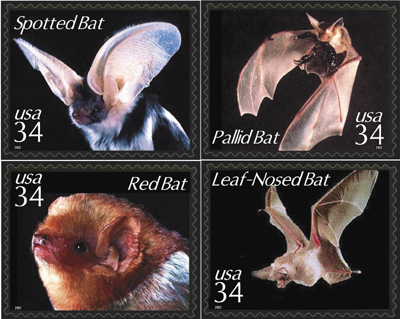Over recent decades, numerous species of bats have been declining, but the causes are not well understood. One of the causes often mentioned is that of environmental toxicants. Feeding on insects makes insectivorous bats more likely to be exposed to insecticides. We sent nine bats (5 Indiana myotis, Myotis sodalis, and 4 northern myotis, Myotis septentrionalis) through U.S. Fish & Wildlife Service (USF&W) sources to be tested for toxicants. Three of these proved to have organophosphate (OP) insecticide residues: chlorpyrifos (0.18 ug/g), diazinon (0.034 ug/g), and methyl parathion (0.015 ug/g). Chlorpyrifos was also detected in all six dead Indiana myotis found during the USF&W Service biennial mid-winter hibernacula surveys in Ray's and Wyandotte Caves, both important Indiana myotis hibernacula. Chlorpyrifos or dichlorvos (another OP) was found in Indiana myotis guano from all four caves sampled (Wyandotte, Coon, Grotto and Ray's). These data are particularly surprising since OP insecticides are thought to have little bioaccumulation in living tissues or in food chains. Their presence in a tissue sample is indicative of exposure shortly before death. Even though exposure to low doses might not be the primary cause of mortality, such exposure could impair echolocation, coordination and response time which, in turn, could lead to significant injuries and death of bats in the field. Presence of OPs in bat guano from caves may suggest insecticide application near these hibernacula and constitutes clear evidence of oral exposure through persistence of toxicants in water or through the food chain.
Source:
Ronny R. Eidels, John O. Whitaker, Jr., Daniel W. Sparks. (2007) Proceedings of the Indiana Academy of Science 1 1 6:50—57

- Log in to post comments
